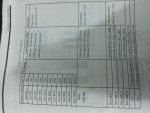Quote from Harlequin RIP manual:
"Calculating Gray Levels
One of the strategies for producing a high-quality image is to in crease the halftone frequency as much as possible, without reducing gray levels below 256 (the maximum level that can be detected). To calculate how many levels of gray are available at a particular halftone frequency and output resolution, use the formula: (dpi ÷ lpi) squared + 1 = gray levels If you know the resolution at which you intend to print, the following formula will help you determine the maximum frequency you can use to maintain 256 grays: lpi = dpi ÷ 16
If you need to produce a job at a required frequency, determine the optimal resolution by using the formula: dpi = lpi x 16"
That's a great example of how
misinformation and incomplete information gets perpetuated in the print industry.
That formula is only true for the tone represented by a single, isolated, halftone dot based on an individual halftone dot cell - something that never occurs in real production environments.
Around 1989 a new approach began to be adopted based on the fact that we don't care about individual halftone dots. What is important is the tone represented in an area. For example, let's say that we want to see a 17% tone patch value in the presswork. However, if we cannot represent that area with individual 17% dots – because of that classic formula limitation – we can still create the 17% value by alternating 16% dots and 18% dots (this is called "dithering"). The eye (and instruments) integrate the alternating 16% and 18% dots and the result is the average value - in this example 17% – our desired tone value.
This strategy is called "supercell screening". Since about 1995 all AM screens from all vendors adopted variants of supercell screening technology:
Agfa - ABS - Agfa Balanced Screening
Heidelberg - HDS - High Definition Screening, and later IS screening
Harlequin - HPS - Harlequin Precision Screening
Creo/Kodak - Creosettes/Maxtone
Fuji - CoRes screening
There are reasons that one might want to go to a higher dpi for their RIP than 2400 - but grey levels limitations isn't one of them:
A fuller explanation is here:
The Print Guide: Halftones and grey levels explained















